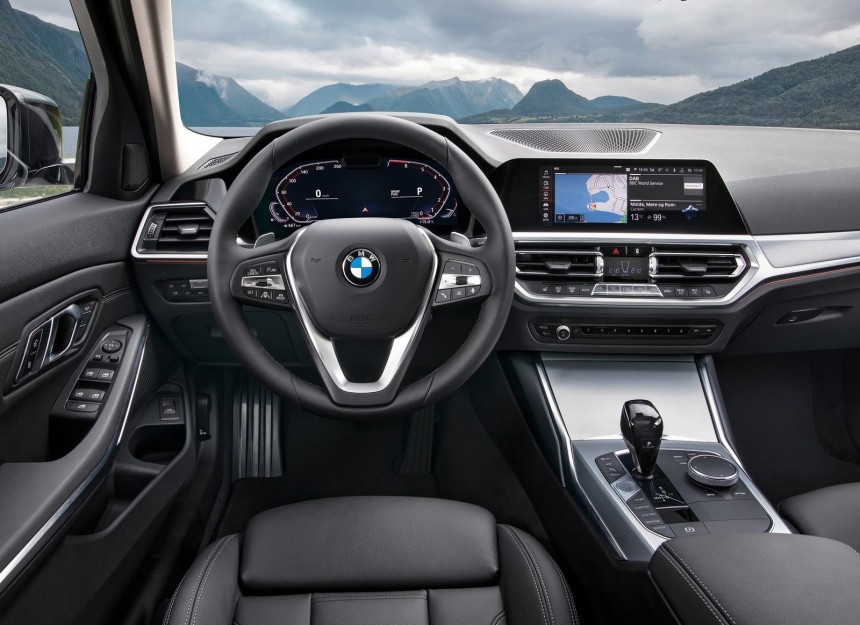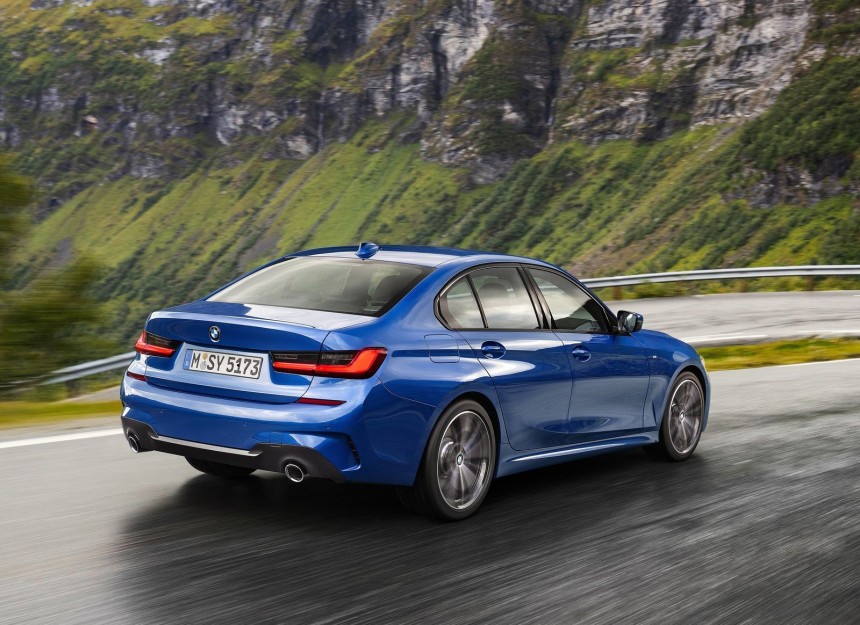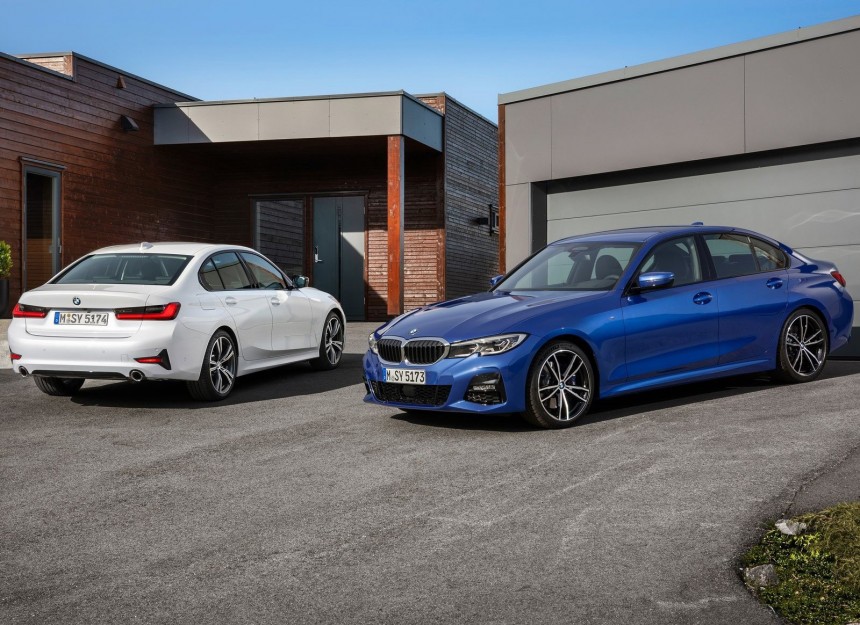Today, it is called the BMW 3 Series, and it is regarded as the most desirable premium sports sedan. About six decades ago, when it represented BMW's hope for salvation, the Bavarians used to call it the New Class (Neue Klasse, in German). And they got really far with it.
The very first version of these Bavarian sporty sedans, the BMW 1500, debuted in 1961, and its length was 4,427 mm (174.3 in). Some 57 years later, the current generation (project indicative G20) had its premiere at the 2018 Paris Mondial de l'Automobile. Its length is 4,709 mm (185.4 in); significant difference, ain’t it? In fact, the 3 Series G20 is somewhat bigger than the first generation of the BMW 5 Series (the midsize sedan launched in 1972), which had a length of 4,620 mm (181.9 in).
It seems the basic rule for the development of German cars through the generations was something like: keep the name; keep adding power; performance, refinement, and comfort; make it a perennial segment reference. That way, the interest of clients was kept alive through the generations of any model series.
The customers' aspiration for “more” was implicitly met in the process. This approach has only one drawback: making the car bigger and superior in every respect also means its price will go up. The evolution of the BMW 3 Series over the decades is a perfect example in this respect.
Then you realize it is just a flattering trick: you can easily find and use everything that’s required to drive the car. There are plenty of options available for the BMW 3 Series but, beyond this and any personal preferences regarding the configuration of no matter what version lies a certitude: you paid for a BMW, it will drive like a BMW!
Concerning the multimedia and connectivity side, it would be hard to find more advanced options on the market now. Making its debut in the latest 3 Series Sedan is the BMW Intelligent Personal Assistant, an intelligent, digital character that responds to the prompt "Hey BMW!" Then there's the Remote Software Upgrade feature, which keeps the new BMW 3 Series Sedan always up to date with the latest software.
All updates can be imported over the air, either via BMW Connected on a smartphone or directly into the car using its built-in SIM card. Those looking for the ultimate audio quality may choose the Harman Kardon surround sound system (included in the optional Entertainment package), complete with 16 speakers and a digital seven-channel amplifier generating 464 watts.
There is a clear high-tech message in the interior design, while the premium note comes mainly from the quality of the materials and the rigorous assembly. This is the essence, while the various options for textures, colors and equipment will reflect the taste of the car's owner. Can you think of a better way to bring somebody inside a car and keep them there for the rest of his driving days?
Knowing the intended profile of the 3 Series, we say its offer really begins at the level of the BMW 320i (184 PS/181 hp) or 320d (190 PS/187 hp). Regarding the freshly presented M3, BMW says it feels at home only on the racetrack. For the moment, we can’t confirm or deny, but this is fully plausible. The twin-turbo straight-six engine of the M3 Competition version delivers 503 hp (510 PS). Once more, a figure showing that the 3 Series overtook the former generations of the 5 Series in many respects: the M3 Competition is actually more powerful than the BMW M5 (E60), with its aspirated 5.0-liter V10 rated at 500 hp (507 PS).
Again, you should remember the 3 Series G20 is quite a big car, with a refined mature side. Its AI should be authorized to tell you: “Sure, we can be fast, but we’ll do it in an academic manner." You just have to select the Sport driving mode, and the traditionally vigorous and eager Bimmer wakes up, with real agility and convincing sharpness in its response. For models with more than 300 hp, however, we recommend the addition of the xDrive all-wheel-drive system. With or without it, the car is stable and safe (thanks to the advanced electronics), yet fully exploiting the dynamic and safety potential of the 3 Series on non-dry roads would require an active implication from all four wheels.
In the U.S., the most affordable version of the 3 Series is the BMW 330i featuring a 2.0-liter turbocharged 4-cylinder rated at 255 hp—if a base version that costs $41,250 can be called “affordable,” of course. On the other hand, this car leaves nothing to desire in terms of performance and refinement. Fitting any of the 3 Series versions with xDrive will add $2,000 to the price. The more expensive versions bring the 3 Series closer to what the exhilarating M3 (473 hp) can do and offer. However, BMW asks at least $69,900 for an M3 equipped with 6-speed manual gearbox. The M3 Competition (503 hp) with the 8-speed M Steptronic automatic transmission and M xDrive is available with a base price of $72,800.
In Europe, the 3 Series is also rather expensive, even when featuring less powerful engines. For example, the Bavarians ask €37,200 for a BMW 318i. At the other end of the price range, the M3 Competition can be yours for €89,500.
It seems the basic rule for the development of German cars through the generations was something like: keep the name; keep adding power; performance, refinement, and comfort; make it a perennial segment reference. That way, the interest of clients was kept alive through the generations of any model series.
The customers' aspiration for “more” was implicitly met in the process. This approach has only one drawback: making the car bigger and superior in every respect also means its price will go up. The evolution of the BMW 3 Series over the decades is a perfect example in this respect.
Ambiance
No matter the version, the BMW 3 Series’ truly sporty profile is always noticeable. It is in the thick steering wheel, in the smart ergonomics, and the accurate road-holding. Looking around when seated in the cockpit for the first time, its rather complex appearance might frighten you for a moment.Then you realize it is just a flattering trick: you can easily find and use everything that’s required to drive the car. There are plenty of options available for the BMW 3 Series but, beyond this and any personal preferences regarding the configuration of no matter what version lies a certitude: you paid for a BMW, it will drive like a BMW!
All updates can be imported over the air, either via BMW Connected on a smartphone or directly into the car using its built-in SIM card. Those looking for the ultimate audio quality may choose the Harman Kardon surround sound system (included in the optional Entertainment package), complete with 16 speakers and a digital seven-channel amplifier generating 464 watts.
There is a clear high-tech message in the interior design, while the premium note comes mainly from the quality of the materials and the rigorous assembly. This is the essence, while the various options for textures, colors and equipment will reflect the taste of the car's owner. Can you think of a better way to bring somebody inside a car and keep them there for the rest of his driving days?
Thrust
It’s hard to find elsewhere such a wide range of engines with 4 and 6 cylinders, from 156 PS (154 hp) in the 318i up to 510 PS (503 hp) in the M3 Competition. It's also possible to go for a plug-in hybrid propulsion system, rated at 292 PS (288 hp). That would be BMW 330e, which is able to cover some 55 km or 34 miles in all-electric mode. Diesels? They are still available outside the U.S., and they are not shy in terms of performance. At the top of the diesel section, you can find the so-called M340d in the form of a 340-PS (335-hp) mild-hybrid that can do 0 to 100 kph (62 mph) in 4.6 s.Knowing the intended profile of the 3 Series, we say its offer really begins at the level of the BMW 320i (184 PS/181 hp) or 320d (190 PS/187 hp). Regarding the freshly presented M3, BMW says it feels at home only on the racetrack. For the moment, we can’t confirm or deny, but this is fully plausible. The twin-turbo straight-six engine of the M3 Competition version delivers 503 hp (510 PS). Once more, a figure showing that the 3 Series overtook the former generations of the 5 Series in many respects: the M3 Competition is actually more powerful than the BMW M5 (E60), with its aspirated 5.0-liter V10 rated at 500 hp (507 PS).
Dynamics
Things seemed to be rather predictable when the dynamic behavior of any generation of the BMW 3 Series came into discussion; it used to have an obvious sporty accent, with an important firmness factor. Nowadays, the 3 Series/G20 feels more comfort-oriented in everyday use than any other in the history of its kind. A bit too silent, a bit too careful for the well-being of the passengers? After all, nobody should blame a sedan for things like these.Doubts
There are no doubts here, only budget limits. Yes, the straight-six engines are fabulous in terms of performance and sound, but the most powerful 4-cylinder versions go well too. Yet, we can’t stop to bring up the pretty much rhetorical question: did they manage to sell any 318i or 316d/318d models to anybody?In the U.S., the most affordable version of the 3 Series is the BMW 330i featuring a 2.0-liter turbocharged 4-cylinder rated at 255 hp—if a base version that costs $41,250 can be called “affordable,” of course. On the other hand, this car leaves nothing to desire in terms of performance and refinement. Fitting any of the 3 Series versions with xDrive will add $2,000 to the price. The more expensive versions bring the 3 Series closer to what the exhilarating M3 (473 hp) can do and offer. However, BMW asks at least $69,900 for an M3 equipped with 6-speed manual gearbox. The M3 Competition (503 hp) with the 8-speed M Steptronic automatic transmission and M xDrive is available with a base price of $72,800.






















